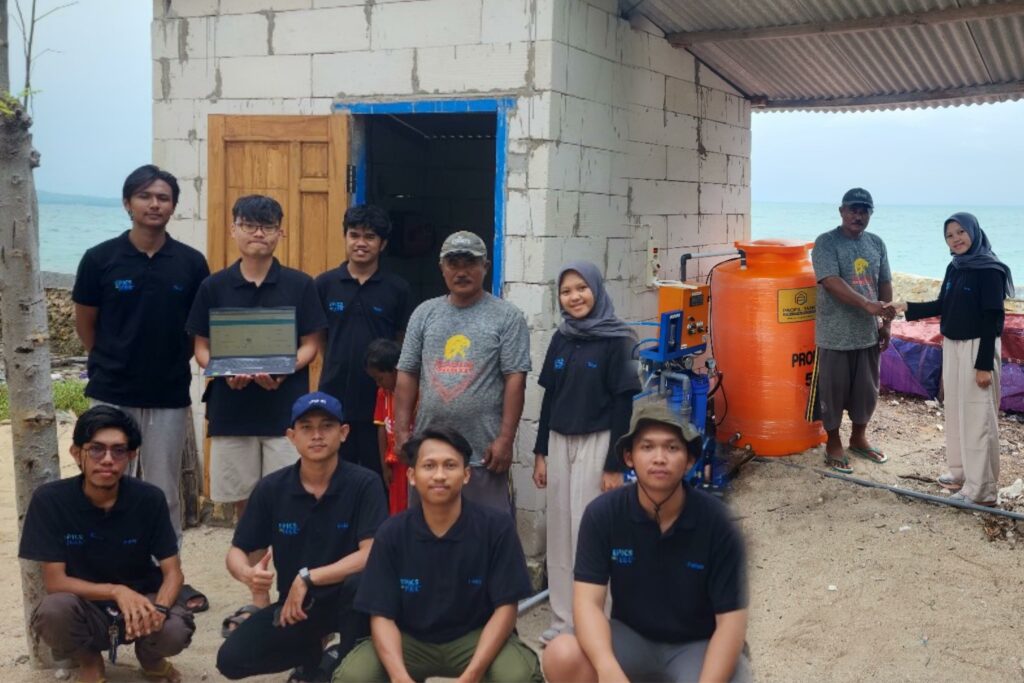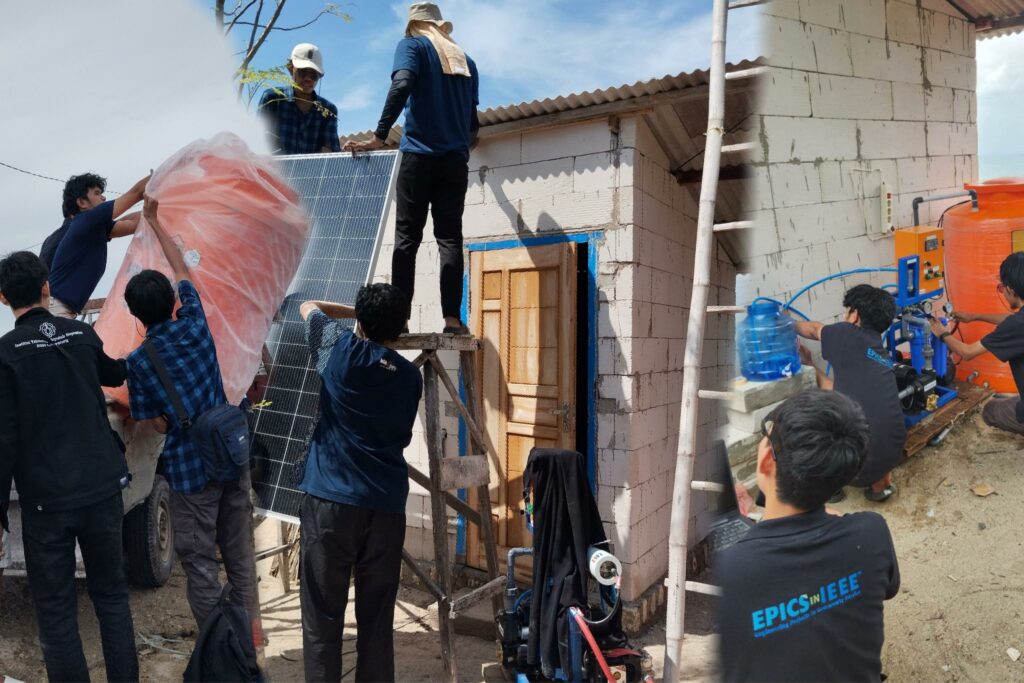Success Story of IoT Implementation: Salt and Drinking Water Production for Gili Genting Island
Faculty

Image: The Moment the Team Handed Over the Water and Salt Production Equipment to the Gili Genting Community.
Gili Genting Island, Madura, is known for its high seawater salinity, ranking second in the world after the Dead Sea in Jordan. This poses a challenge for the local community, which needs clean drinking water while also utilizing salt for fishing activities. To address this need, an innovation team from the Electrical Engineering Department at ITS developed the Gili Genting Island’s Oxygen Conservation: IoT-Driven PV-RO for Salt and Drinkable Water Production project, funded by IEEE EPICS (Engineering Project in Community Service).
This project was led by Rohmah Hidayah (Master’s in Electrical Engineering), known as Ema, alongside a core team consisting of Dewi Nurdiyah (PhD in Electrical Engineering), Aulia Vici Yunitasari (Master’s in Electrical Engineering), and Glenn Ricardo Gani (Master’s in Electrical Engineering). They were also assisted by several undergraduate student volunteers from the Electrical Engineering Department, including Ghozi Dita Mawardi, Clairine Aprialda Rosalind Rambo, Putu Krishna Masari Kumara, and M. Hilmi.
The project journey began with a survey of Gili Genting Island to understand the community’s primary needs. The findings revealed that there was a high demand for drinking water, while most of the residents worked as fishermen who needed salt for fish preservation. Based on these findings, the team developed a Sea Water Reverse Osmosis (SWRO) device capable of producing both drinking water and salt within a single system, powered by solar energy (Photovoltaic or PV).
However, the path to implementation was not easy. The process of securing funding from IEEE EPICS was lengthy, requiring the team to revise their proposal three times before successfully obtaining a grant.
Once funding was secured, the next challenge was developing the device itself. The team faced difficulties in finding an SWRO system with the appropriate capacity that could produce both drinking water and salt. They had to conduct four trial runs to achieve the required Total Dissolved Solids (TDS) standard, which ranged between 300-375. Due to limited access to Gili Genting Island during development, initial trials were conducted in Kenjeran, Surabaya.
Additionally, weather conditions posed a significant challenge. Salt production relies on hot weather, while the rainy season in Madura can hinder this process. Therefore, the team had to coordinate closely with local NGOs to ensure the system could operate optimally on Gili Genting Island.
In December 2024, the project was finally implemented successfully. The equipment was handed over to the local community, who also received training on monitoring and maintaining the system through IoT technology. With web-based monitoring, the fishing community can easily ensure water quality and optimize salt production.
Test results showed that the processed water met safety standards and was suitable for consumption. As a result, this project was not only a technical success but also had a tangible impact on the Gili Genting Island community. Currently, the team continues to monitor the system to ensure it functions well and provides maximum benefits to the local population.
Ema expressed her hopes for the project,
“We hope this project can be sustained and serve as an example for other islands around Gili Genting Island.”
Latest News
-
Informatics Lecturer from ELECTICS ITS Guides Students in Thematic Literacy KKN in Mabung Village
Surabaya, ELECTICS ITS – In an effort to support the improvement of literacy in rural communities, Dr. Sarwosri, S.Kom.,
-
Computer Engineering Department of ELECTICS ITS Showcases Innovations at Toyota’s Internal Exhibition
Surabaya, ELECTICS ITS – The Computer Engineering Department of the Faculty of Intelligent Electrical and Informatics Technology (ELECTICS) at
-
ITS FTIRS Students Win Second Prize at SEA-CICSIC 2025
SEA-CICSIC 2025 (Southeast Asia – China International College Students’ Innovation Competition) is the Southeast Asian regional version of the






